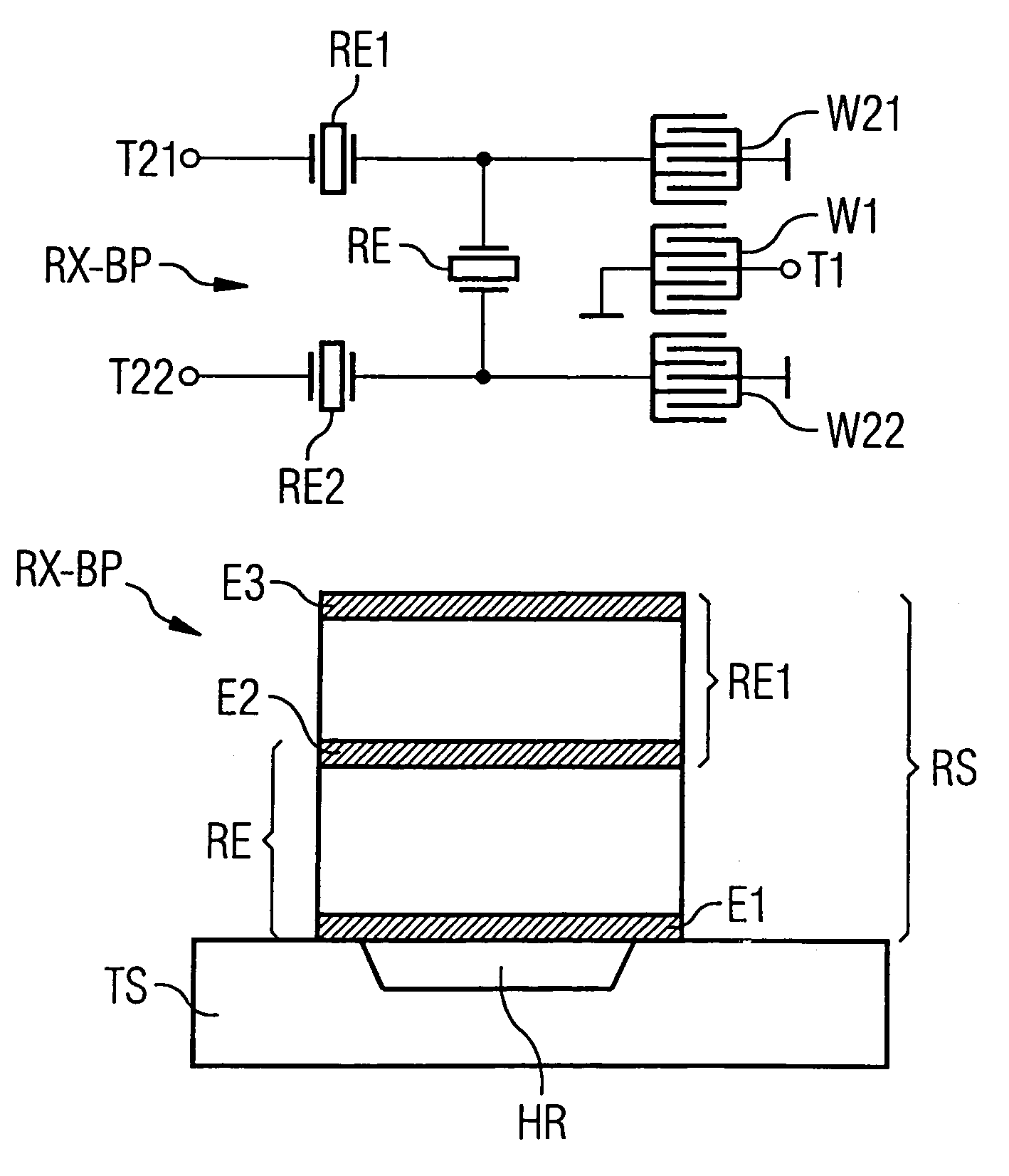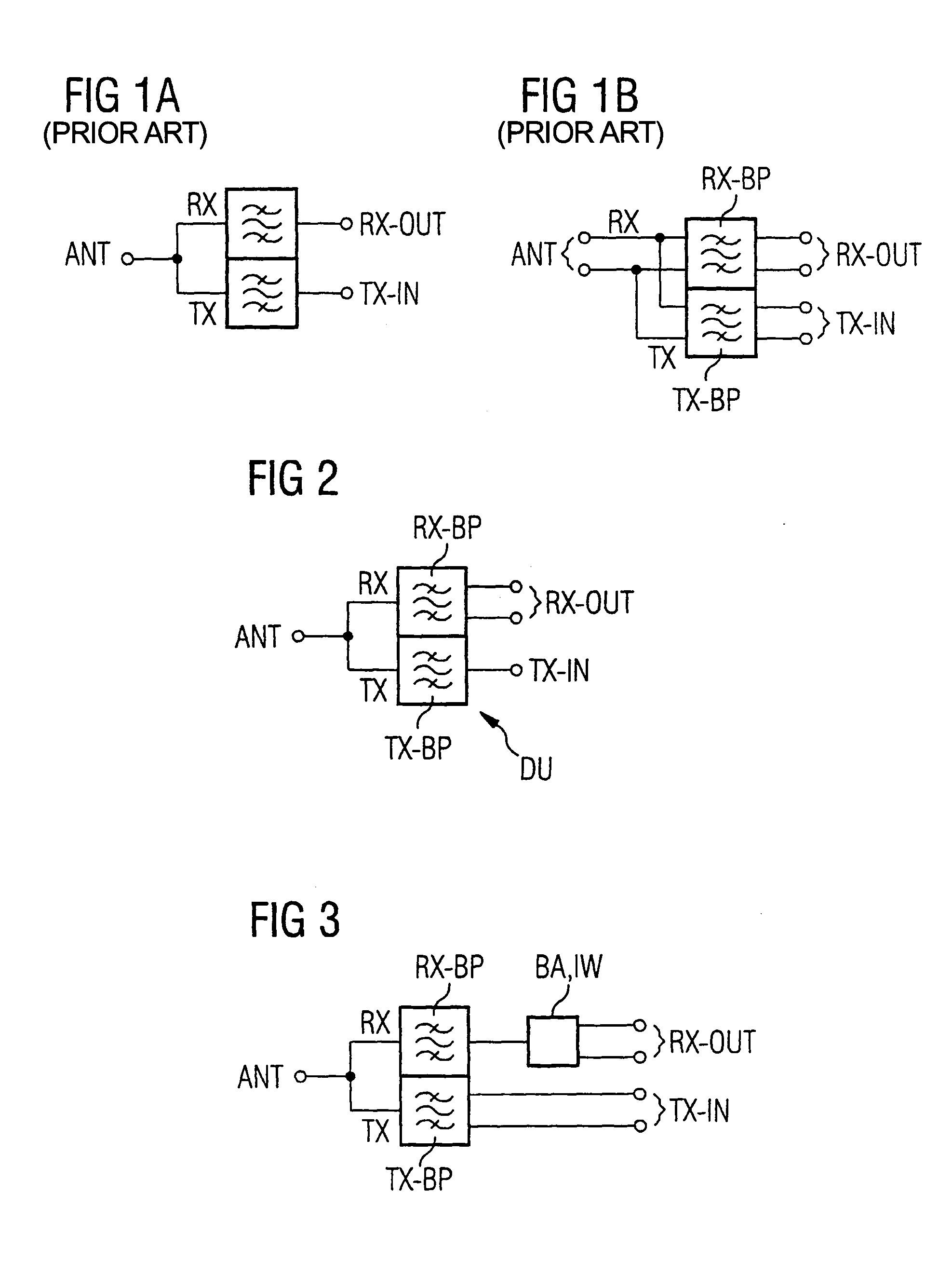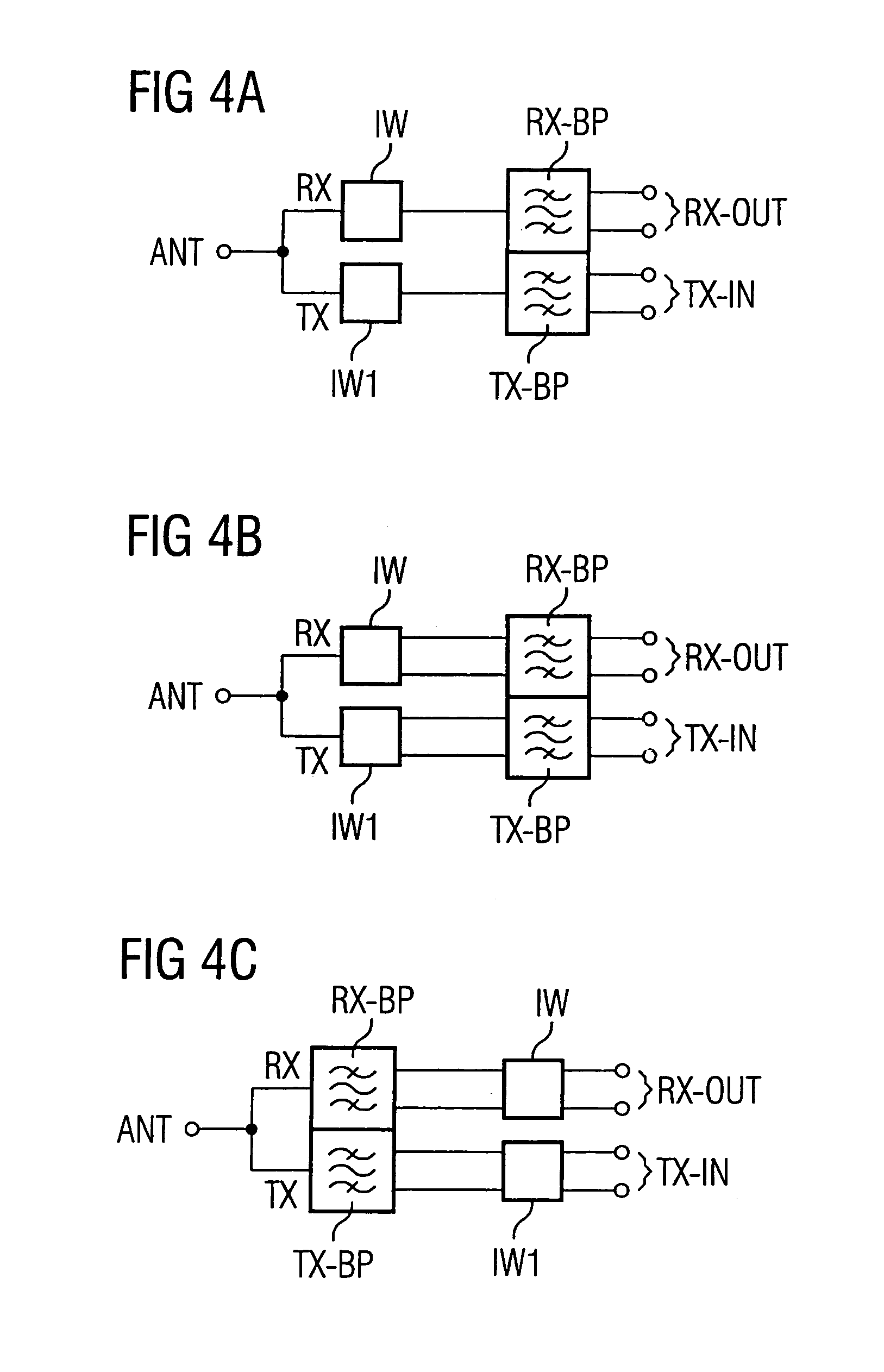Duplexer with extended functionality
a technology of duplexer and functionality, applied in the field of duplexer, can solve problems such as signal loss at the adaptation elements
- Summary
- Abstract
- Description
- Claims
- Application Information
AI Technical Summary
Benefits of technology
Problems solved by technology
Method used
Image
Examples
Embodiment Construction
[0035]FIG. 2 shows a first variant of the duplexer DU according to the invention with an asymmetrically designed transmission input TX-IN. The duplexer has an asymmetrically designed antenna port ANT as well as parallel signal paths RX (reception path) and TX (transmission path), which are either directly connected at one end to the antenna port ANT or indirectly, through an adaptation circuit not illustrated here, and, at the opposite end, to another port (reception output RX-OUT of the reception path, the transmission input TX-In of the transmission path). A transmission bandpass filter TX-BP is arranged in the transmission path TX, and a reception bandpass filter is arranged in the reception path RX.
[0036]In this variant, the transmission input TX-IN is designed asymmetrically.
[0037]The reception output RX-out is designed symmetrically. The reception bandpass filter RX-BP is asymmetrical at the input (on the antenna's side), and symmetrical on the output side, and thus has a balu...
PUM
 Login to View More
Login to View More Abstract
Description
Claims
Application Information
 Login to View More
Login to View More - R&D
- Intellectual Property
- Life Sciences
- Materials
- Tech Scout
- Unparalleled Data Quality
- Higher Quality Content
- 60% Fewer Hallucinations
Browse by: Latest US Patents, China's latest patents, Technical Efficacy Thesaurus, Application Domain, Technology Topic, Popular Technical Reports.
© 2025 PatSnap. All rights reserved.Legal|Privacy policy|Modern Slavery Act Transparency Statement|Sitemap|About US| Contact US: help@patsnap.com



